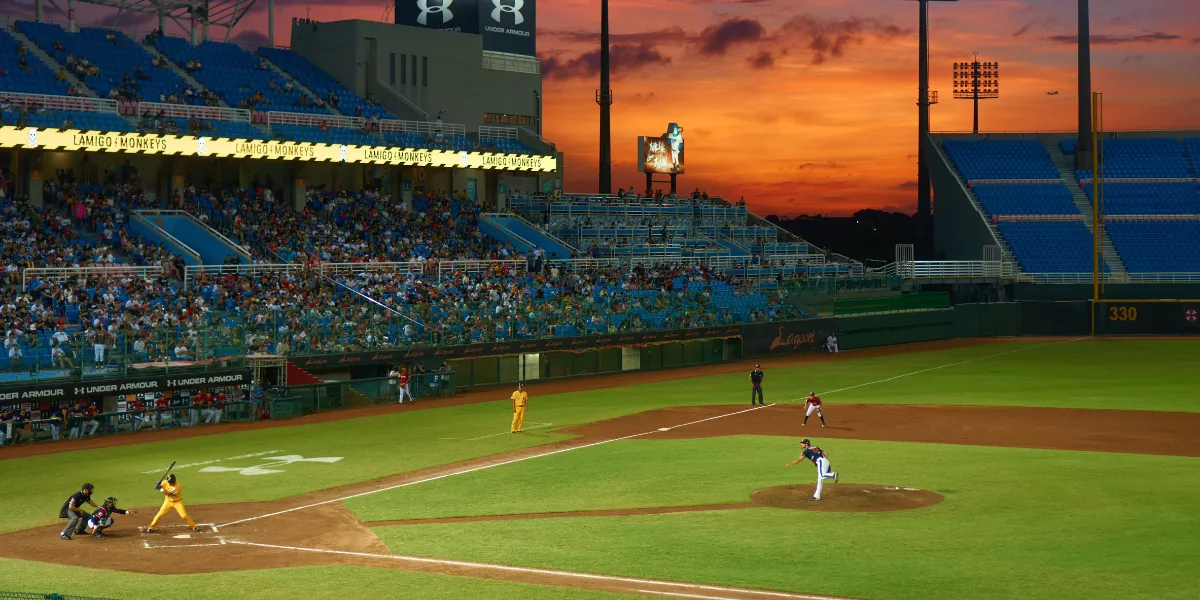
Weather can greatly impact baseball games. Extreme heat can strain players, leading to fatigue and affecting pitching accuracy. Wind direction and speed alter ball trajectories, giving batters an edge if they understand the patterns. Rain delays force teams to adjust strategies quickly. Humid weather shortens ball distance, favoring pitchers. After heavy rain, field conditions become challenging. Learn more about how weather nuances affect baseball gameplay.
Pitching Performance in Extreme Heat
Pitching becomes more challenging in extreme heat due to the increased strain on your body and the impact on grip and control. The scorching heat can deplete your energy faster, leading to fatigue and affecting your overall performance on the mound. As you sweat profusely, your grip on the ball may weaken, making it harder to maintain control and accuracy in your pitches.
Moreover, the intense heat can alter the flight of the ball, causing it to behave unpredictably as it travels through the hot, thin air. This can make it difficult for you to execute your pitches with the same level of precision and consistency as you'd in milder conditions. Your breaking balls may not break as sharply, and your fastballs may not have the same zip, giving batters an advantage at the plate.
To combat these challenges, staying hydrated and taking breaks in the shade between innings can help you maintain your strength and focus during hot weather games. Adjusting your grip and staying mentally sharp are also crucial in overcoming the obstacles posed by pitching in extreme heat.
Effects of Wind on Hitting
When facing windy conditions during a baseball game, hitters must adjust their approach to account for the impact of wind on the trajectory of the ball. The direction and speed of the wind can significantly affect how far a hit ball travels and how it behaves in the air.
For instance, a strong wind blowing out towards the outfield can carry a well-hit ball further, potentially turning a routine flyout into a home run. Conversely, if the wind is blowing in, it can hold up a deep fly ball, causing it to fall short of the fence.
To adapt to these conditions, batters may need to alter their swing to compensate for the wind's influence. Hitters might aim to hit line drives or ground balls to avoid getting under the ball and letting the wind push it off course. Understanding the wind patterns at the ballpark and making real-time adjustments during the game can give batters an edge in maximizing the effectiveness of their hits.
Rain Delays and Game Strategy
During rain delays in baseball games, teams strategically plan their next moves to maintain momentum and readiness for when play resumes. Coaches use this time to reassess their pitching rotation, considering factors like pitcher fatigue and the impact of the delay on their performance. They may decide to keep the current pitcher in the game, bring in a relief pitcher, or even change the starting pitcher if the delay is prolonged.
Position players also stay active during rain delays, keeping their muscles warm and staying mentally focused to quickly get back into the game once the weather clears up. Additionally, teams use this break to discuss their game strategy, reviewing the opponent's weaknesses and planning their offensive and defensive tactics accordingly.
Humidity and Ball Flight
Teams in baseball games experience a noticeable difference in ball flight due to varying levels of humidity in the air. Humidity, the amount of water vapor present in the atmosphere, plays a significant role in how the baseball travels during a game.
When the air is humid, the baseball tends to travel shorter distances compared to dry air. This is because humid air is less dense than dry air, resulting in less resistance against the ball as it flies through the atmosphere. The decreased air density in humid conditions allows the ball to cut through the air more easily, leading to less drag force acting upon it.
As a result, hitters may find it challenging to hit home runs or long fly balls in humid weather conditions. Pitchers, on the other hand, might benefit from the denser air, as breaking balls can be more effective due to increased air resistance.
Therefore, understanding the impact of humidity on ball flight is crucial for both hitters and pitchers to adjust their strategies accordingly during games.
Field Conditions After Heavy Rain
After heavy rain, the baseball field undergoes significant changes in its playing surface conditions. The once pristine diamond transforms into a muddy terrain, affecting gameplay in multiple ways. The infield, typically groomed to perfection, becomes soft and waterlogged, making ground balls harder to field cleanly. Players must adjust their movements carefully to navigate the slippery surfaces and prevent slips or falls.
The outfield grass, usually lush and neatly trimmed, turns into a soggy mess that slows down the ball's roll. Outfielders need to anticipate the reduced speed and adjust their positioning accordingly to make plays effectively. Additionally, the pitcher's mound and batter's box become mud patches, leading to inconsistent footing and potentially impacting pitch accuracy and hitter's timing.
Groundskeepers work tirelessly to improve field conditions post-rain by using drying agents, rakes, and other tools to enhance playability. Despite their efforts, the aftermath of heavy rain can significantly alter the dynamics of a baseball game, challenging players to adapt and showcase their skills in less-than-ideal circumstances.




